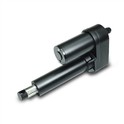Storing a bed lift mechanism properly when it's not in use is crucial for its longevity and optimal performance. As a well - established supplier of bed lift mechanisms, I've witnessed firsthand the importance of correct storage practices. In this blog, I'll share some valuable insights on how to store a bed lift mechanism effectively.
Cleaning and Inspection Before Storage
Before you put the bed lift mechanism into storage, it's essential to give it a thorough cleaning. Use a mild detergent and a soft cloth to wipe down all the metal parts. This helps to remove any dirt, dust, or debris that may have accumulated during use. Pay special attention to the moving parts such as the gears, chains, and pulleys. These areas are more prone to collecting grime, which can cause wear and tear over time.
After cleaning, conduct a detailed inspection. Check for any signs of damage, such as cracks in the metal frame, loose bolts, or frayed cables. If you notice any issues, it's best to address them before storage. Minor repairs can prevent more significant problems in the future. For example, tightening loose bolts can ensure that the mechanism remains stable during storage and subsequent use.
Disassembly (If Applicable)
Some bed lift mechanisms can be disassembled for easier storage. If your mechanism allows for this, follow the manufacturer's instructions carefully. Disassembling the mechanism can reduce its size, making it more manageable to store. For instance, if the mechanism has detachable arms or brackets, removing them can significantly decrease the overall footprint.
When disassembling, label all the parts clearly. This will make reassembly much easier when you're ready to use the mechanism again. You can use small tags or masking tape to mark each part with a corresponding number or letter. Additionally, keep all the small parts, such as screws and nuts, in a single container. This prevents them from getting lost and ensures that you have everything you need for reassembly.
Choosing the Right Storage Location
The storage location plays a vital role in preserving the quality of the bed lift mechanism. Ideally, you should choose a dry, cool, and well - ventilated area. Moisture is one of the biggest enemies of metal components, as it can lead to rust and corrosion. Avoid storing the mechanism in basements or attics that are prone to high humidity levels.
A climate - controlled storage unit is an excellent option if available. It can maintain a consistent temperature and humidity level, which is ideal for protecting the mechanism. If you don't have access to a climate - controlled unit, a garage or a shed can also work, as long as you take steps to prevent moisture buildup. For example, you can use a dehumidifier in the storage area to keep the air dry.
Protecting the Mechanism
Once you've chosen the storage location, it's time to protect the bed lift mechanism. Wrap the mechanism in a protective material such as bubble wrap or a heavy - duty plastic sheet. This provides a barrier against dust, dirt, and scratches. Pay extra attention to the moving parts and any exposed metal surfaces.
If the mechanism has electrical components, make sure to cover them with a waterproof and dust - proof cover. This protects the electrical parts from damage due to moisture or debris. You can also use a storage case specifically designed for the bed lift mechanism if available. These cases are often made of durable materials and provide excellent protection.
Storage Orientation
The orientation in which you store the bed lift mechanism can also affect its condition. If possible, store the mechanism in an upright position. This helps to prevent any unnecessary stress on the components. For example, if the mechanism is stored horizontally for an extended period, it may cause the chains or cables to sag, which can affect their performance when the mechanism is used again.
However, if the mechanism is too large to store upright, make sure to support it properly. Use blocks or padded supports to keep the mechanism level and prevent any bending or warping of the frame.
Regular Checks During Storage
Even when the bed lift mechanism is in storage, it's important to perform regular checks. Every few months, inspect the mechanism for any signs of damage or deterioration. Check for rust, loose parts, or any other issues that may have developed during storage.


If you notice any problems, address them immediately. For example, if you see a small amount of rust forming, you can use a rust remover to clean it off and then apply a protective coating to prevent further rusting.
Reassembly and Testing
When you're ready to use the bed lift mechanism again, it's time to reassemble it. Follow the disassembly instructions in reverse order, using the labels you created during disassembly. Make sure to tighten all the bolts and screws securely.
After reassembly, test the mechanism thoroughly. Check all the moving parts to ensure that they operate smoothly. Test the lifting and lowering functions to make sure they work correctly. If you encounter any issues during testing, don't hesitate to contact a professional for assistance.
Conclusion
Proper storage of a bed lift mechanism is essential for its long - term performance and durability. By following these steps, you can ensure that your mechanism remains in excellent condition during periods of non - use. As a supplier of bed lift mechanisms, we offer a wide range of high - quality products, including the Hidden Bed Lift Mechanism and the Storage Bed Mechanism.
If you're in the market for a bed lift mechanism or have any questions about storage or usage, we're here to help. Contact us to discuss your requirements and explore our product range. We look forward to serving you and helping you find the perfect bed lift mechanism for your needs.
References
- Manufacturer's instructions for bed lift mechanisms
- Industry best practices for storing metal components
- Research on the effects of humidity and temperature on metal corrosion






